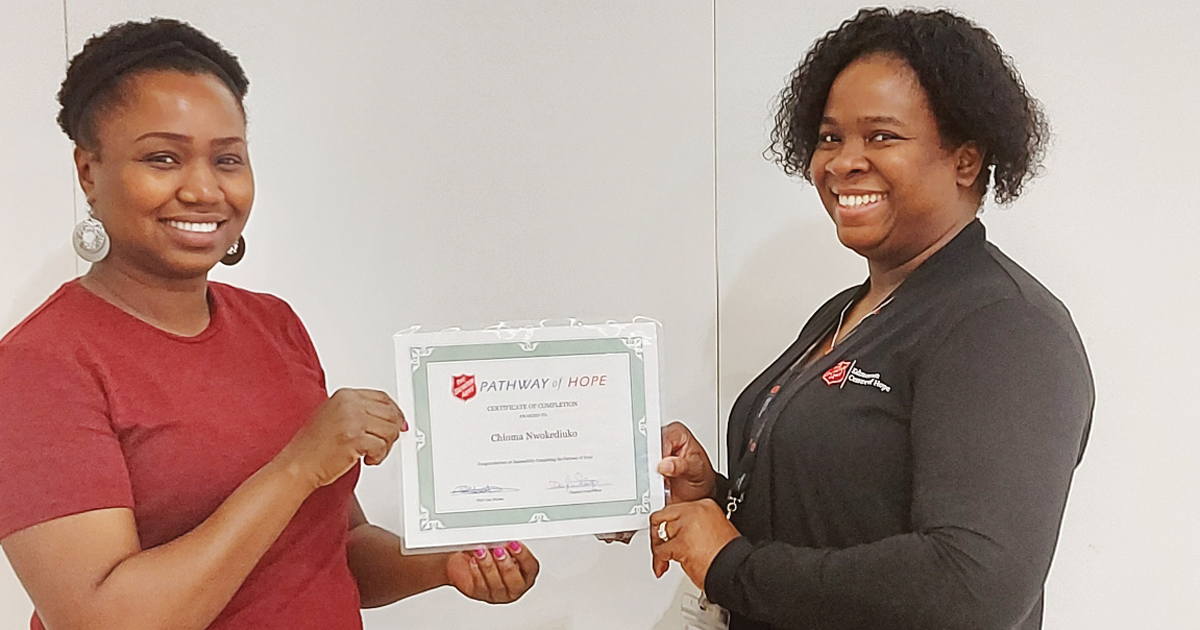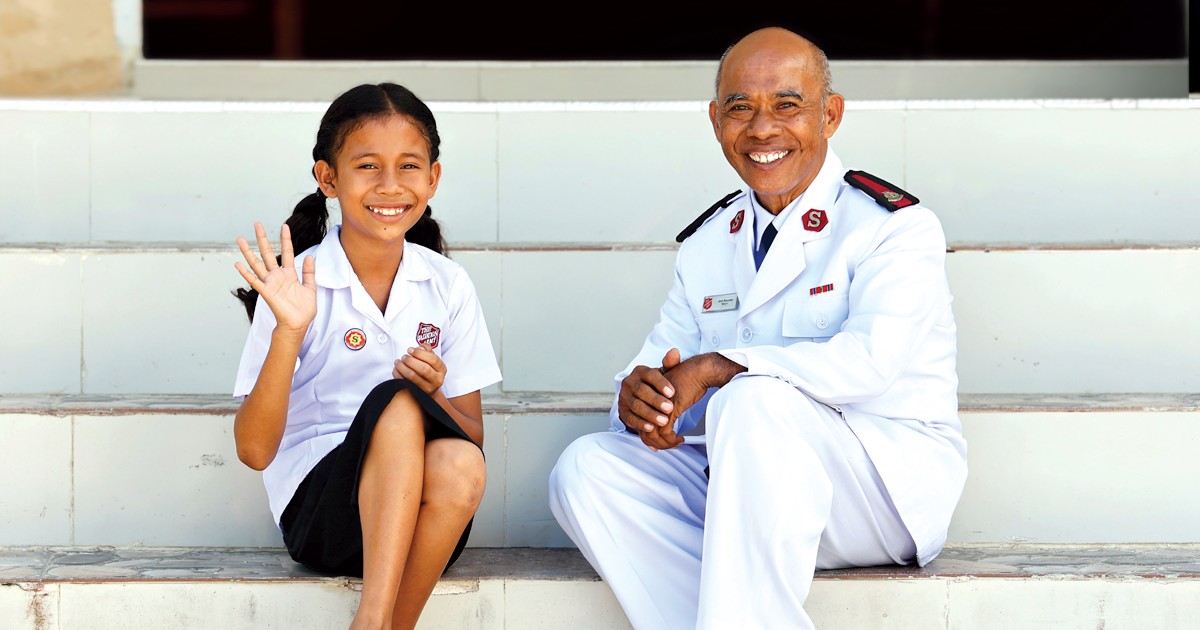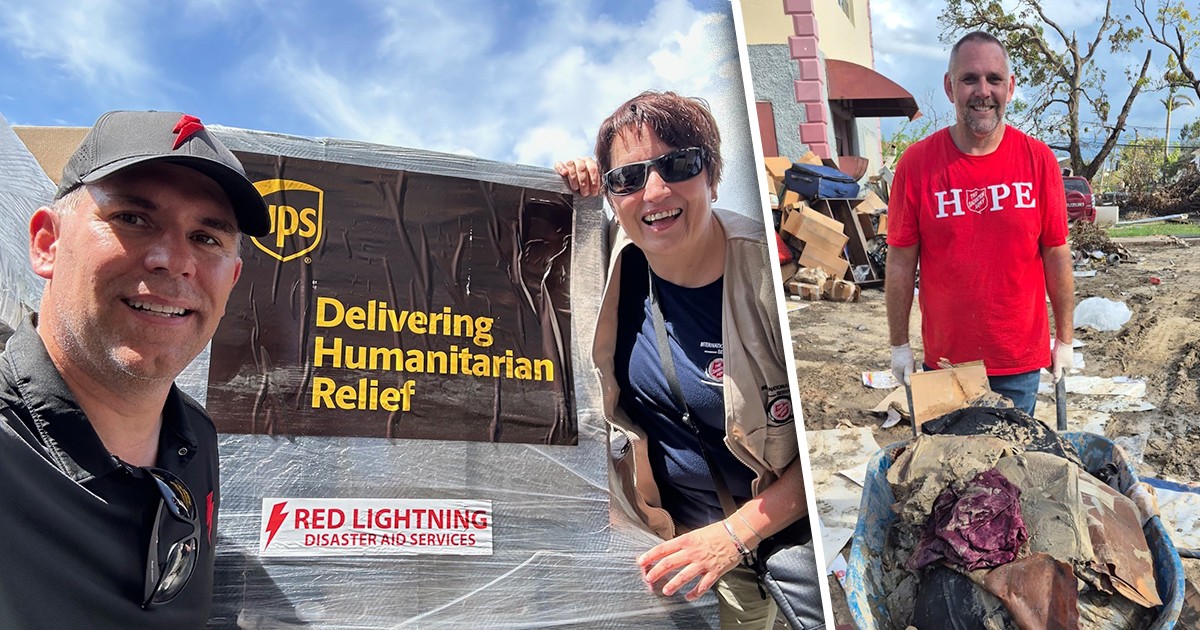(Above) From left, Chioma receives a certificate of participation from Priscilla Hibbert, caseworker, recognizing her completion of the Pathway of Hope program
Every year, Canada opens its door to thousands of immigrants, each with a dream of making a better life for themselves and their families. Settling in a new country is challenging, and lacking the knowledge to navigate the system makes it even more difficult. Chioma, a young single mother who arrived in Alberta from Nigeria with her eight-year-old daughter, faced a similar woe. Lonely and financially constrained, she was uncertain of her next steps.
One day, Chioma met a friend who told her about The Salvation Army's Edmonton Centre of Hope and how she could be helped by the staff there. Despite feeling downcast, she mustered up the courage to visit the centre where she was met by one of the managers. Chioma was introduced to the Pathway of Hope and assigned a caseworker to assist her with the transition to her new life in Canada. After receiving an overview of the program and learning how it would help to secure a better future for her and her daughter, Chioma was ecstatic. She would no longer have to struggle to figure out everything by herself. Enthusiastically, she enrolled in the program.
Chioma began setting goals, such as getting her international teaching education evaluated in Alberta, becoming gainfully employed and acquiring new parenting skills for raising her daughter in the Canadian culture. “I came into the Pathway of Hope program unsure of what lay ahead, but hopeful that it would be something amazing,” she recalls.
The Pathway of Hope assessment tools were instrumental in tracking Chioma’s progress. After meeting with her caseworker for the first session, Chioma felt as though she had gained a new family and no longer felt alone or afraid. She was also introduced to the rest of the team, including a spiritual care worker, who played an integral part in her new journey. “I gained a better understanding of myself; I grew in confidence and spirituality,” she says.
Within her first month of enrolment in the program, the young mother’s success was undeniable. “I gained a support system and became a better Chioma,” she recalls. Some of those achievements included finding casual employment in the Edmonton public school system and receiving a teaching certification by the Alberta Teachers’ Association. After a one-month contract position at an Edmonton public school, she was offered a full-time job. Chioma immediately shared the great news with her Pathway of Hope family at the Edmonton Centre of Hope.
Chioma’s journey through Pathway of Hope was one marked by tremendous growth. She connected with a parenting group, which was a source of strength for her and her daughter. She also added a fourth goal of going back to school for nursing. Pathway of Hope staff helped with the application process, and Chioma was accepted into two nursing programs—one of which she accepted and started in fall 2020.
Pathway of Hope Fast Facts
In Canada, one out of seven people live in poverty. Many factors contribute to this problem: lack of employment, income, housing, food and childcare. Through Pathway of Hope, participants set goals to make positive change happen in their lives.
• 82% of participants experienced increased stability within an average of seven months
• 74% of participants experienced increased hope
• 60% of participants strongly agree that their faith or spiritual beliefs increased
• 76% of participants strongly agree that they have made a connection to a faith or spiritual community
• 59% of the goals set in Pathway of Hope (including employment, education, financial stability and health care) have ended in successful achievement in an average of four months
• Over 160 households have been served, including more than 210 children
To learn more about Pathway of Hope, visit salvationist.ca/integrated-mission.
Statistics taken from the 2019 Pathway of Hope Impact Report.
Christina Clapham is the Pathway of Hope regional co-ordinator for the Alberta and Northern Territories, British Columbia and Quebec divisions.










Leave a Comment